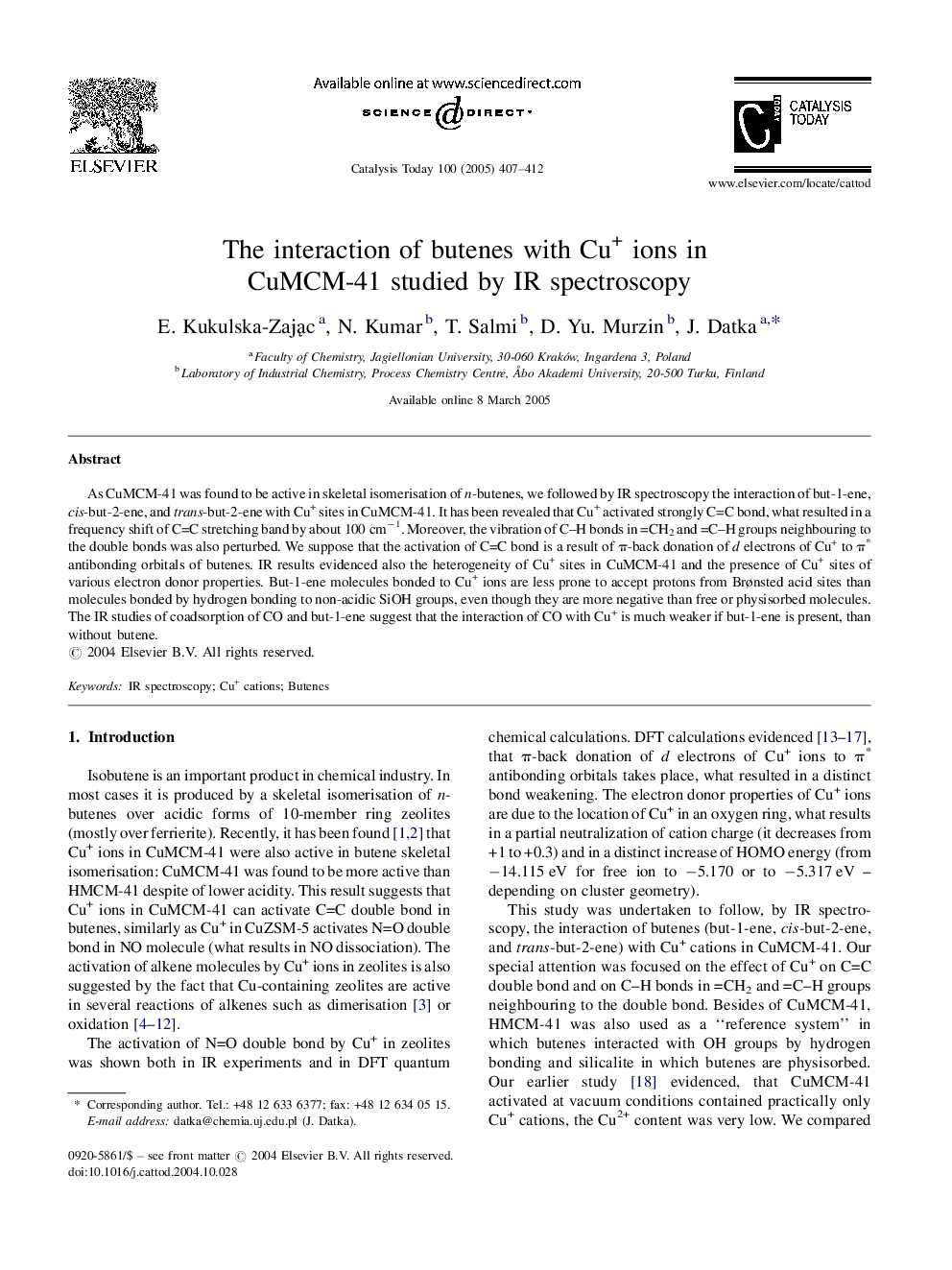| Article ID | Journal | Published Year | Pages | File Type |
|---|---|---|---|---|
| 9610519 | Catalysis Today | 2005 | 6 Pages |
Abstract
As CuMCM-41 was found to be active in skeletal isomerisation of n-butenes, we followed by IR spectroscopy the interaction of but-1-ene, cis-but-2-ene, and trans-but-2-ene with Cu+ sites in CuMCM-41. It has been revealed that Cu+ activated strongly CC bond, what resulted in a frequency shift of CC stretching band by about 100 cmâ1. Moreover, the vibration of CH bonds in CH2 and CH groups neighbouring to the double bonds was also perturbed. We suppose that the activation of CC bond is a result of Ï-back donation of d electrons of Cu+ to Ï* antibonding orbitals of butenes. IR results evidenced also the heterogeneity of Cu+ sites in CuMCM-41 and the presence of Cu+ sites of various electron donor properties. But-1-ene molecules bonded to Cu+ ions are less prone to accept protons from Brønsted acid sites than molecules bonded by hydrogen bonding to non-acidic SiOH groups, even though they are more negative than free or physisorbed molecules. The IR studies of coadsorption of CO and but-1-ene suggest that the interaction of CO with Cu+ is much weaker if but-1-ene is present, than without butene.
Keywords
Related Topics
Physical Sciences and Engineering
Chemical Engineering
Catalysis
Authors
E. Kukulska-ZajÄ
c, N. Kumar, T. Salmi, D. Yu. Murzin, J. Datka,
